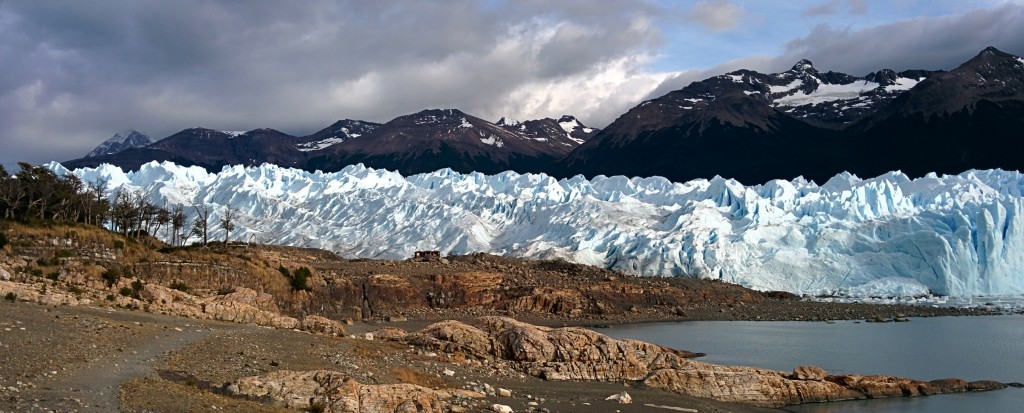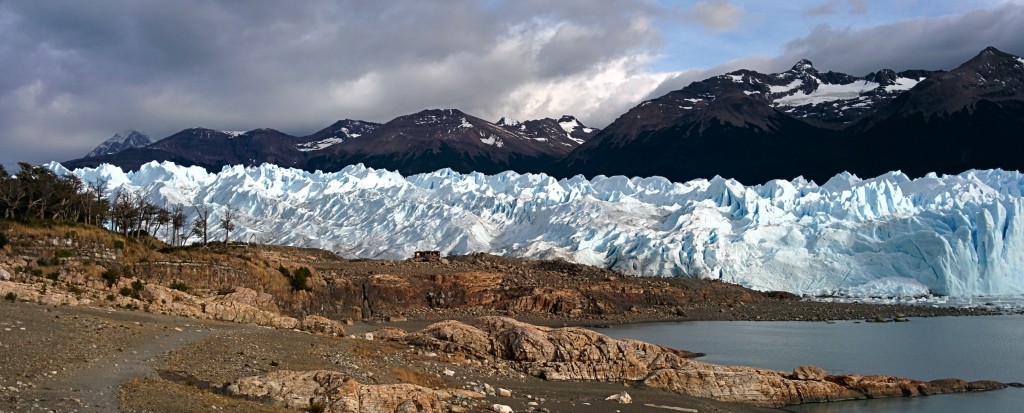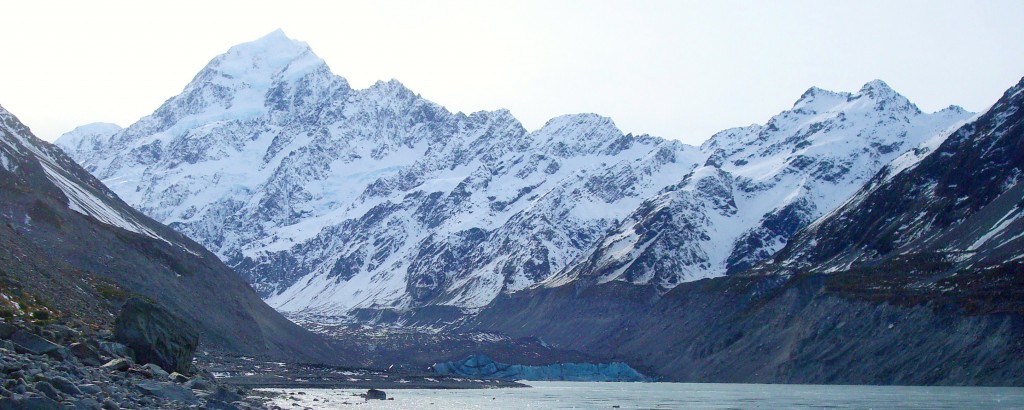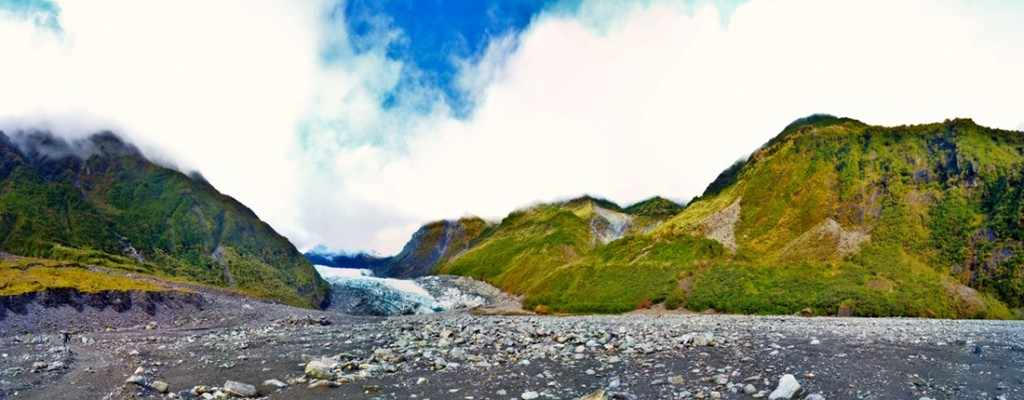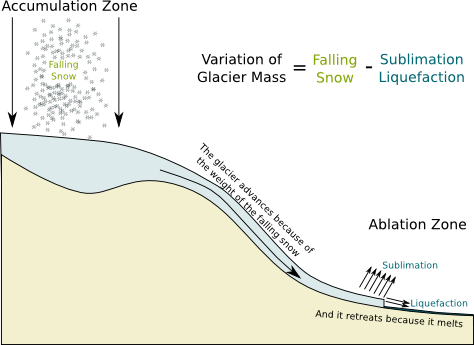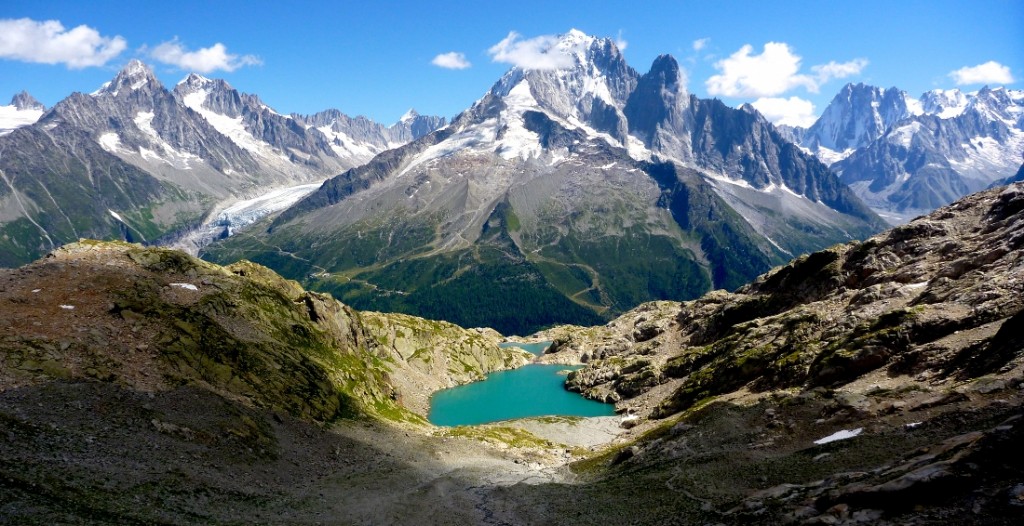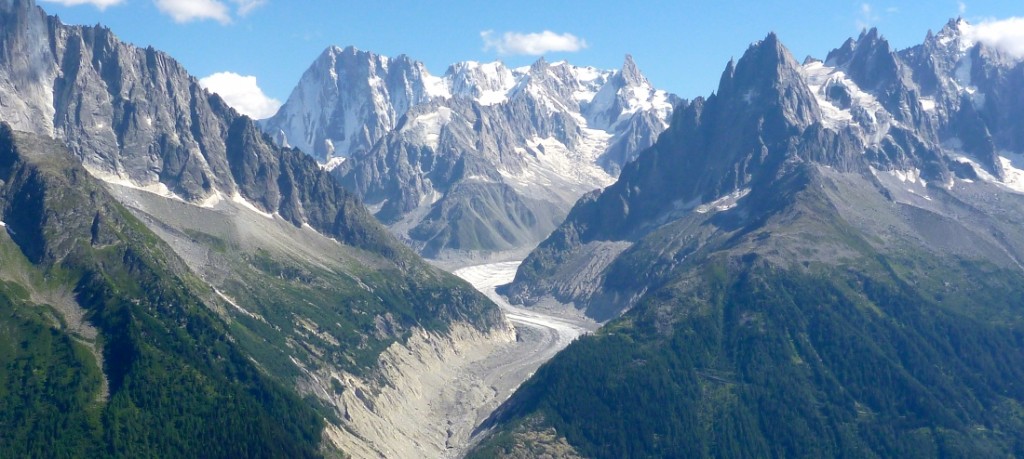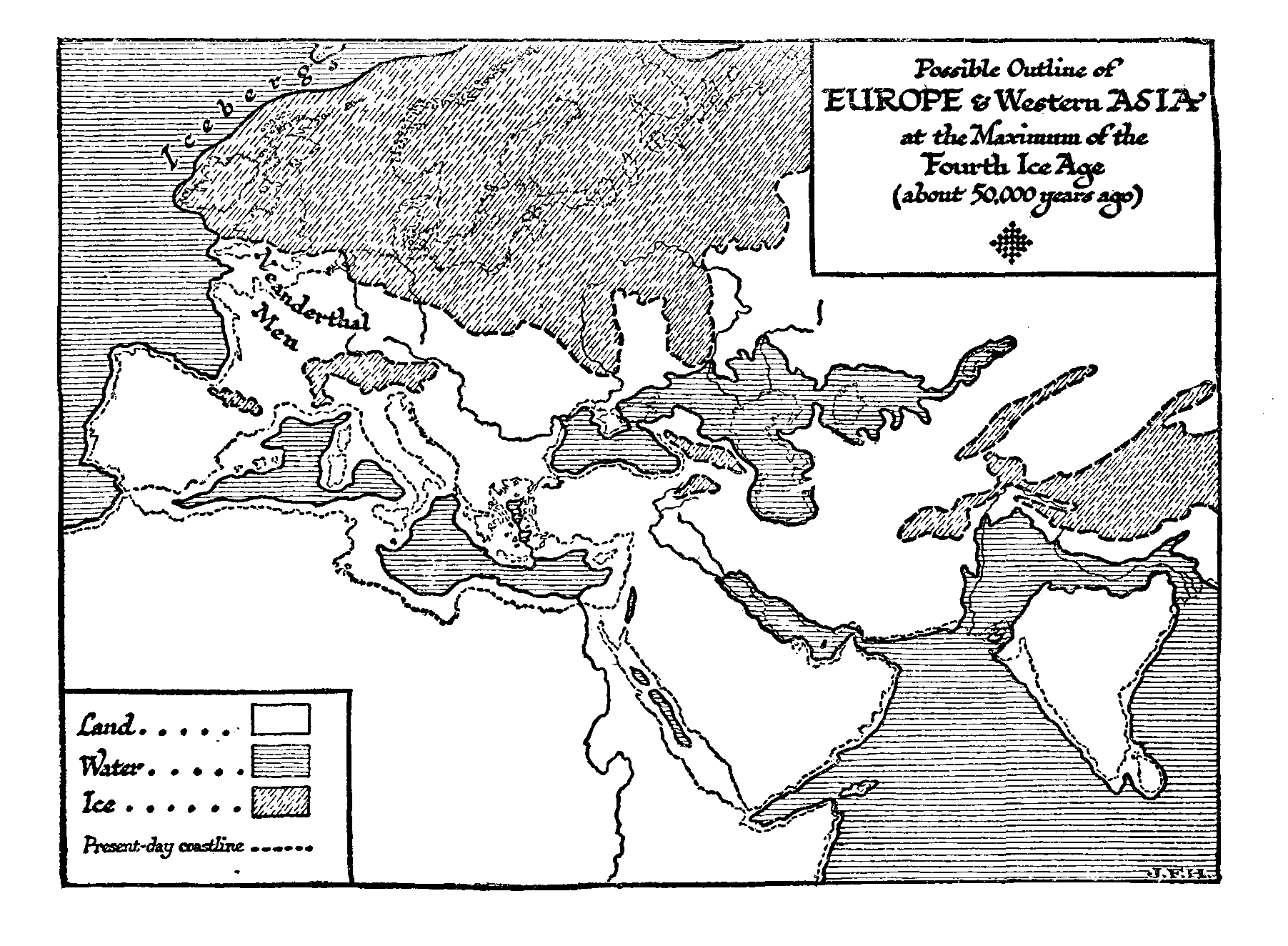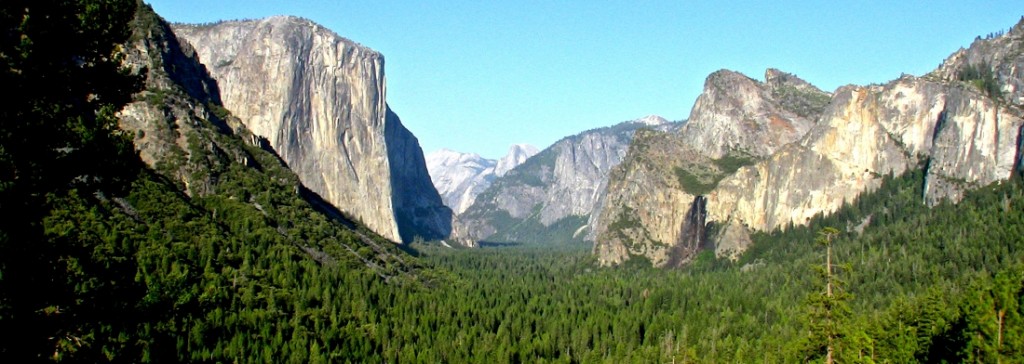Glaciers are overwhelmingly dramatic. In this article, we will present their key features and explain how important they are. But, before starting, let’s have a look at one of the monsters we’ll be working on. The following figure displays an ice tongue of the Vatnajökull in Iceland.
If you enjoyed this picture, keep reading, as I’m sharing in this article other great pictures of glaciers I’ve taken! Like that of the Perito Moreno in Argentina:
Generalities about Glaciers
Basically, yes. Maybe not just a large block, but rather a gigantic accumulation of ice, which can be as large as the size of a country. And its enormity makes it very long to melt. It therefore stays throughout seasons, years and centuries as a single colossal mass of ice.
From the snow that has been accumulating on the top of the glacier.
Yes there is. As you’re picturing it, snow is lighter and more fragile. Indeed, water drops that eventually turned into snow were solidified high in the sky in a very slow manner. Because of this, it gave water molecules time to structure themselves into the geometries which minimize the energy of the block of solidified water. The structure leaves also a lot of gaps which are filled by air. The geometry is based on 120° angles and can take different forms depending on temperature and humidity, as displayed in the following figures of snowflakes.

Snowflakes get crushed!
That’s because you are way too weak, at least compared to glaciers! You have to picture snow being covered by thick layers of snow.
Tens, hundreds or even thousands of meters of snow! This creates an enormous pressure that smashes the snowflakes into dense solidified water, also known as ice. That’s why, even though Mount Cook, the summit of New Zealand, may be covered in snow, the glaciers flowing down are made of almost ice only.
Yes! As the ice gets crushed, it gets rid of air and becomes very dense. This is accentuated by surface water melting due to sun rays and filling deeper layers, as it eventually freezes back. So, the ice which comes out of glacier tongues is extremely dense frozen water. Now, the blue property really is a property of water molecules. In particular, the bonds oxygen-hydrogen tend to absorb red frequencies of light. What’s left is blue.
Retreat and Advance
You have probably heard that glaciers have been retreating. This phenomenon is attributed to global warming.
As you’d expect it intuitively, heat does melt glaciers and diminishes their size. Ice can even evaporate directly. These phenomenons which diminish the size of glaciers are called ablation. They occur rather in areas of glaciers which are warmer. This usually corresponds to lower elevations or area more exposed to sun. These areas are called ablation zones.
Indeed. Some glaciers are actually advancing despite warming or extension of ablation zones. This has been the case, for instance, for Fox Glacier in New Zealand. Not only does this glacier extend to the rainforests, but it’s also been advancing for the two last decades!
Let’s first answer your last question. Because glaciers are extremely huge and dense, it takes time to melt them, even if the temperature is high. In fact, in the early 1800s, Frederic Tudor took advantage of this, as he shipped huge blocks of ice from New England to the Caribbean islands, and even to India! You can find out more about this in the introduction of my article on the frontier of cold.
Another important feature of glaciers is that, counter-intuitively, they behave like viscous fluids. This is due to the enormous pressure they are under, and can only be observed for large masses of ice. To simplify, you can think of these glaciers as dense ice cream. They flow downhill. They typically advance a few centimeters per day, and a few hundreds of meters a year, as displayed in the following fast-forward video from French TV show c’est pas sorcier.
Sure! The higher the slope, the faster the glacier. This typically explains why Fox Glacier is in the rainforest: It’s because the slope from the mountains to the rainforest is so steep that the glacier is advancing very quickly at this point. To actually find out how far a glacier can go, you need to compare the speed at which it flows with the speed at which it melts.
I can’t certify that it’s warmer now at Fox Glacier than two decades ago, but I can provide an explanation for the advancement of the glacier even if it’s actually getting warmer! As I said, what we need to compare is the speeds at which the glacier flows and at which it melts. Now, if it’s getting warmer, it does melt faster. But it could still be advancing…
Exactly!
No it’s not. At least, not in a couple of decades. There’s actually another important factor which can increase the speed of the glacier. It’s its weight. The heavier the glacier, the faster it will flow down. Just like ice cream.
Exactly! Now, snow mainly falls in high elevations. These areas which accumulate snow of glaciers are called accumulation zones. And as you said, the more they accumulate snow that falls, the heavier the glacier gets, the faster it flows down and the more it advances. Overall, glaciers retreat because they melt, and they advance because it snows. Another way of understanding it is the volume of glacier varies depending on the difference between the mass of fallen snow and the mass of melted ice. This is displayed in the following picture:
Indeed it has! And I’ve been given an interesting explanation by a New Zealand guide. She said that the development of Australian cities like Melbourne and Sidney may have created more humid air masses which flow to New Zealand’s west coast. This could have resulted in increasing precipitations, and, thus, the advancement of Fox Glacier.
Dangers of Glaciers
Glaciers are breathtaking. It’s highly recommended not to venture on glaciers without guides! They’re also very dangerous.
The main danger is crevasses. These holes can be tens to hundreds of meters deep.
Not necessarily. Fresh snow may have covered these holes. Even worse, it may have constructed natural bridges over crevasses. These bridges may totally cover the hole, while being not solid enough to support your weight!
Ice under huge pressure does behave like ice cream. And, overall, glaciers do undergo huge pressures because of their own weights. But it’s not the case of the ice at their surface! This ice behaves much more like a solid object. And since this ice goes through large variations of slopes which implies strong forces all over the object, it can break.
Amusingly, the crevasses created by the breaking of ice eventually collapses, as the glacier arrives at weaker or more stable slopes. This means that a ski trapped in the a crevasse can eventually be found surrounded by ice in the ablation zone of the glacier years later. Less amusingly, if you fall into a crevasse and can’t get out, you’ll eventually die trapped and frozen under meters of ice…
Indeed. As explained in the video, crevasses that form in winter are filled with snow, while crevasses that form in summer are filled with dusts. This means that later on on the glacier, we have successions of white and black lines, which correspond to the season in which a crevasse at the level of the lines was formed. These lines are known as Forbes bands.
Yes. Although there are several glaciers it is dangerous to live near.
Formations of subglacial water lakes can lead to floods. The worst example of this concerns glaciers on volcanoes, which can provoke catastrophic jökulhaups. To know more about these, read my article on geological wonders of Iceland. But glaciers can also create other lakes which don’t even need to be subglacial to be dangerous.
As glaciers advance, they drag huge rocks. When they stop advancing and start retreating, these rocks are left. They form what’s known as moraines. These moraines form natural dams, creating lakes like the lac blanc in the Alps in France.
In other cases, huge lakes can be formed by moraines. But as the lakes get larger, the pressure on these moraines increase. They then may yield suddenly, resulting in the enormous lakes being poured instantaneously into valleys. These floods can easily destroy villages of valleys.
Fortunately, in developed countries, artificial deviations of water can avoid such disasters. However, there are other areas, especially in the Himalayas, where kilometers of lakes are withhold by fragile moraines. This is probably the major risk linked with the retreat of glaciers in these regions.
The example of Fox Glacier shows how much more complicated the relationship between global warming and retreat of glaciers can be. Indeed, for instance, the glaciers of Antartica might still be advancing. However though, in other areas like in the Arctic, the retreat of glaciers is obvious. Worse, in many cases, it has quickly accelerated in the last decades. This is the case, for instance, of the vallée blanche in the Alps:
Overall, glaciers do seem to be retreating. And as the Earth keeps warming, retreat of glaciers will accelerate. Thus, an increase of sea level is to be expected. This could have catastrophic consequences for coastal towns and cities. In particular, the Netherlands, which are largely built under sea level, may be constantly flooded in decades.
Glaciers over Geological Times
What if I now told you that the Earth had gone through ice ages? If you don’t believe me, check this video of the Ice Age!
Indeed. Still, my point is that, at some point in the past, the weather was much colder, which means that glaciers were much larger than they are today. In fact, Canada and Northern Europe were covered by two gigantic glaciers!Does this mean that sea level was much lower?




